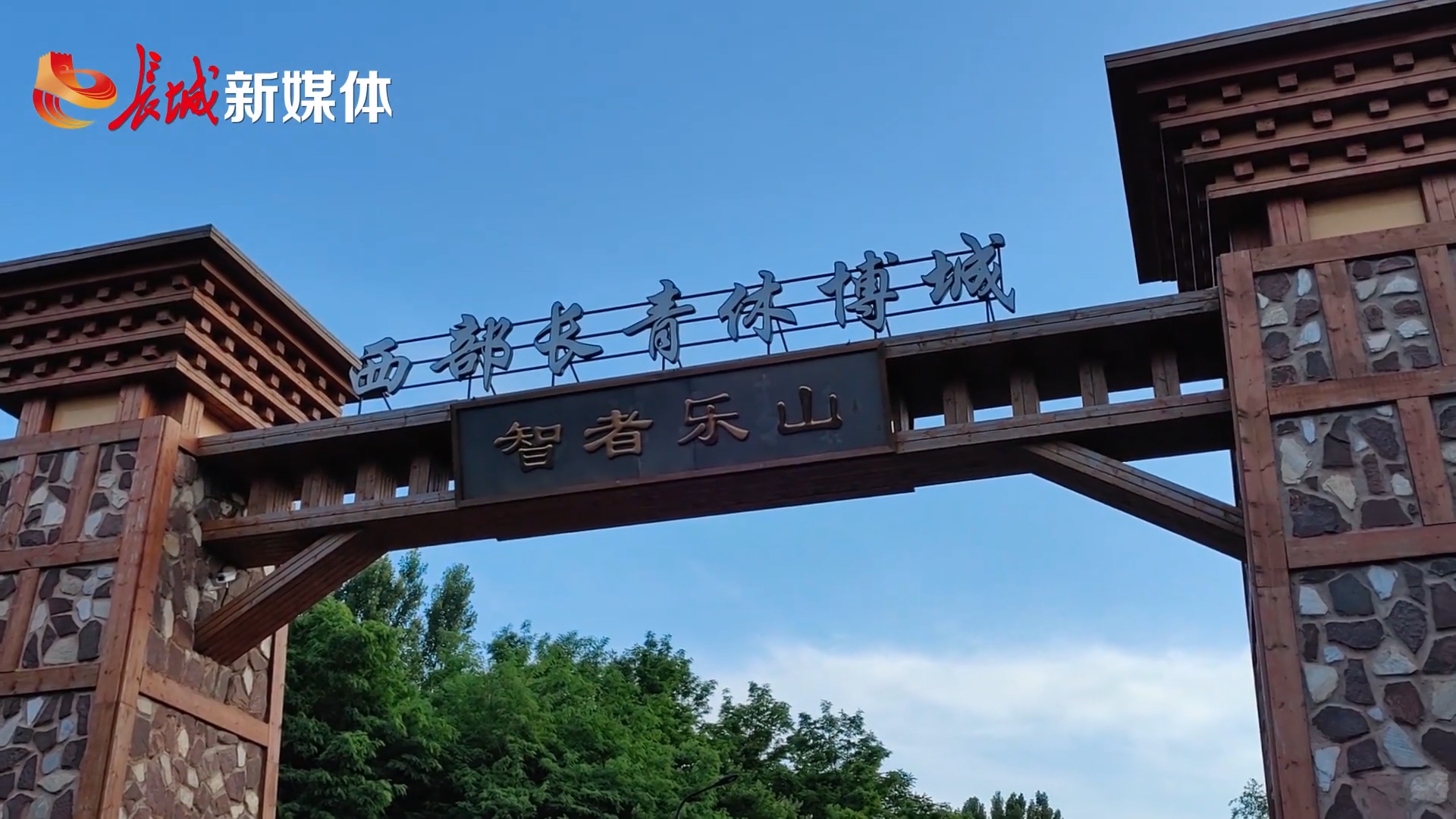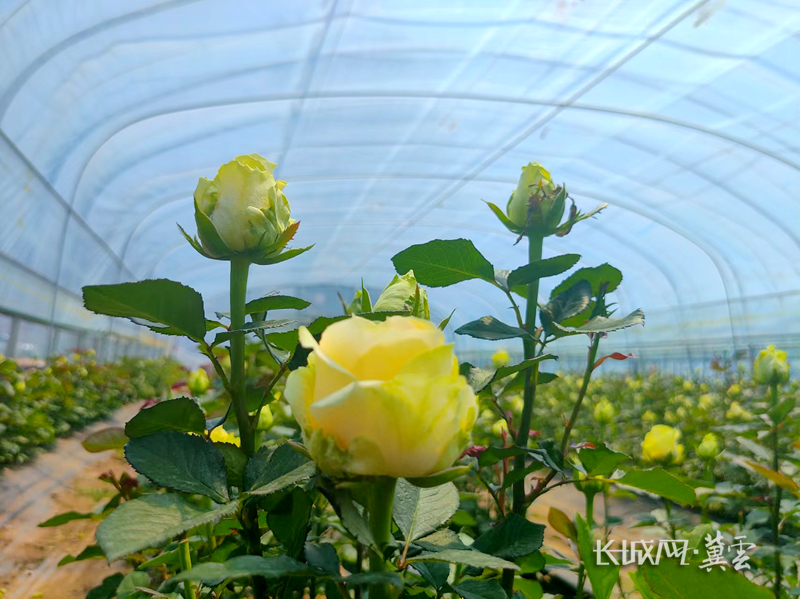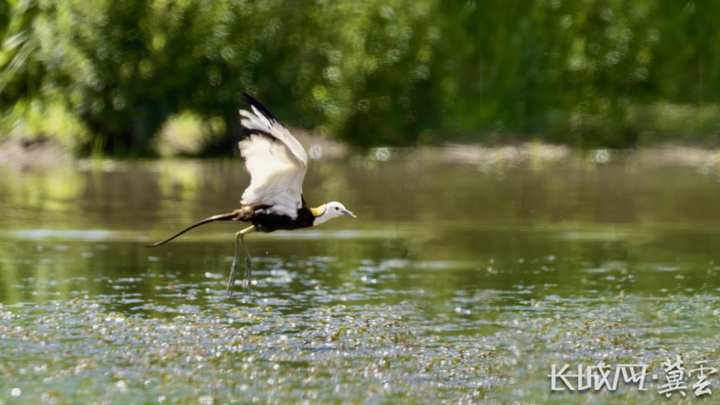China's sports industry has seen remarkable development in recent years thanks to surging consumption of fitness products and the emergence of domestic sports brands.
During the 2022 China International Fair for Trade in Services (CIFTIS), over 353 companies participated in the event's sports services exhibition, which covered an area of more than 20,000 square meters. Deals worth about 12.72 billion yuan (around $1.77 billion) were signed at the 2022 CIFTIS sports services exhibition, reaching a historical high.
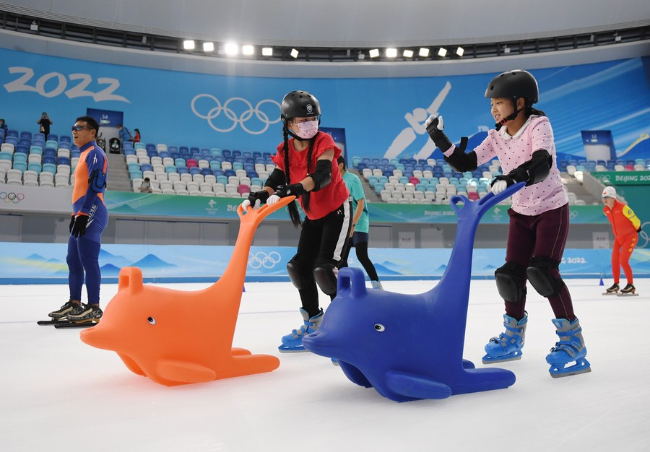
Tourists skate at the National Speed Skating Oval in Beijing, July 9, 2022. (Xinhua/Zhang Chenlin)
In 2018, the added value of China's sports sector exceeded 1 trillion yuan, accounting for over 1 percent of the country's GDP.
In 2014, the State Council issued a document calling for the acceleration of the development of the sports industry and promotion of sports consumption, making the "Fitness for All" program a national strategy and injecting new momentum into the development of the sports sector.
With the "Fitness for All" gaining greater popularity, buying sports equipment, taking part in sports activities, experiencing emerging niche sports, watching sports events and leasing sports courts have become new consumption trends.
According to statistics from the sports economy department of the General Administration of Sport of China (GASC), the size of the country's sports, fitness and leisure exercise surged by 548.83 percent from 27.69 billion yuan in 2015 to 179.66 billion yuan in 2019.
The Beijing 2022 Winter Olympics has also boosted the development of China's winter sports sector. During the 2021-22 snow season, 312 million ice and snow-related tourist trips were made, with ice and snow tourism revenues hitting 390 billion yuan, up 44.4 percent from the 2016-17 snow season, according to Peng Weiyong, deputy director of the GASC's economy department.
Thanks to the popularity of "Fitness for All" activities and relevant policies boosting the sports industry's development, domestic sports brands have made coordinated efforts in a range of aspects, such as technological innovation, reform of sales channels, and increasing international influence. These brands' high-quality and more cost-effective products featuring novel designs have become popular with many young people.
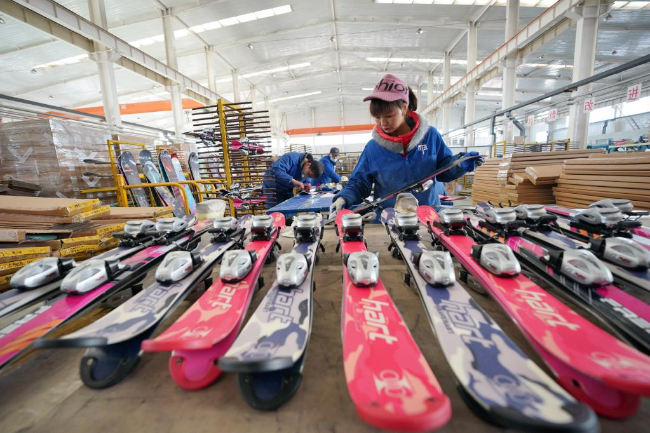
Workers of Jingxi Sports Equipment Co. Ltd make snowboards in Zhangjiakou, north China's Hebei Province, Dec. 5, 2020. (Xinhua/Mou Yu)
Furthermore, the number of legal entities in China's sports industry reached 289,000 in 2019, 1.5 times more than in 2015.
China's ice and snow sports equipment sector has also entered the development fast track. In recent years, northeast China's Heilongjiang, Jilin and Liaoning provinces have put forward plans to build ice and snow sports equipment manufacturing industrial parks and increase investment in the ice and snow sports equipment market.
Over the past 10 years, China's sports industry has maintained high-speed growth and seen an optimized industrial structure.
Going forward, the country's sports industry will become further integrated with other industries, as the sector sees significant increases in size and enjoys a better development environment and greater market potential.
Editor: Zheng Bai




